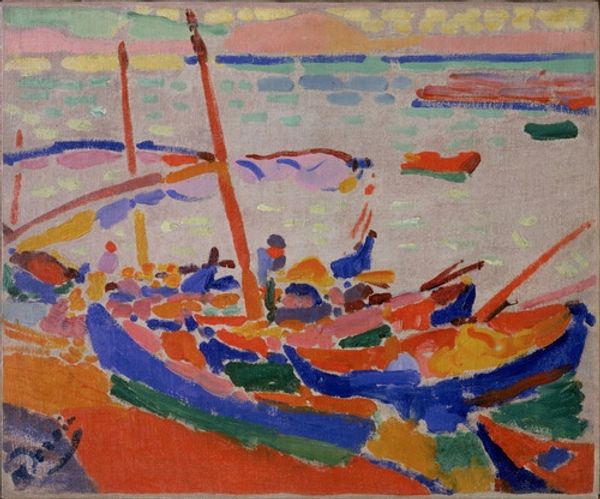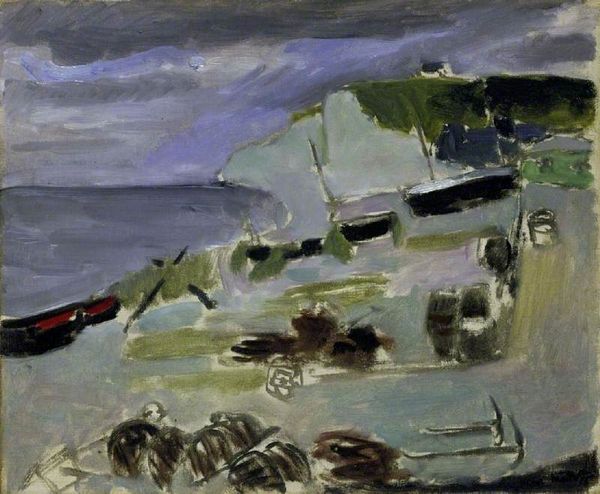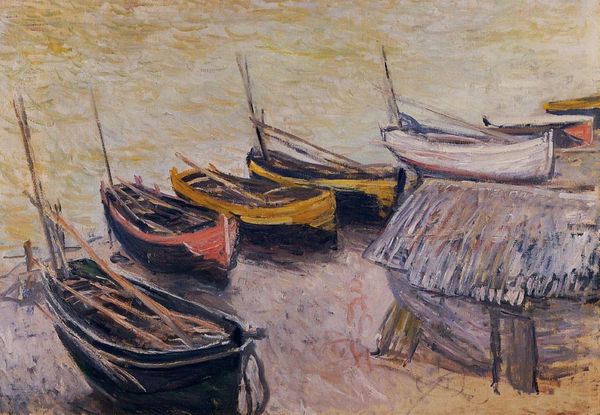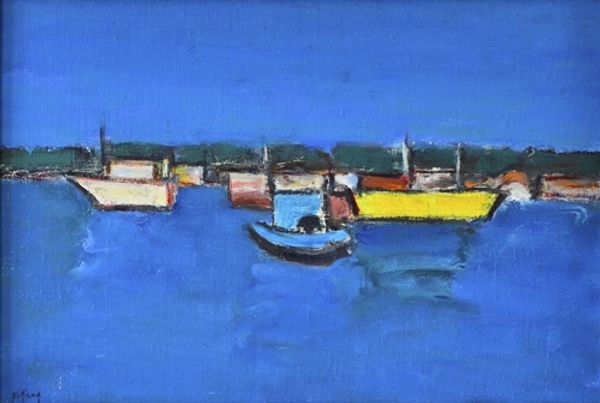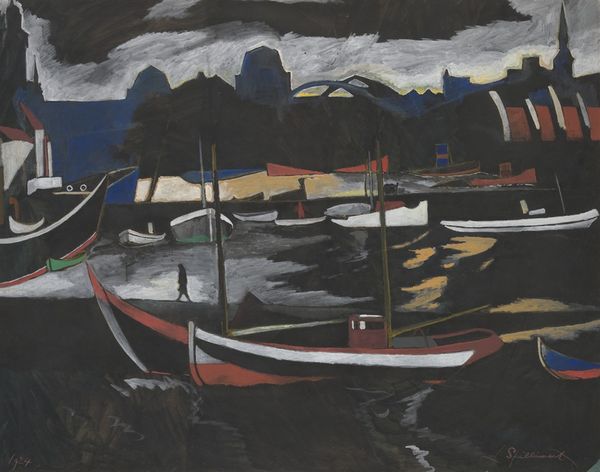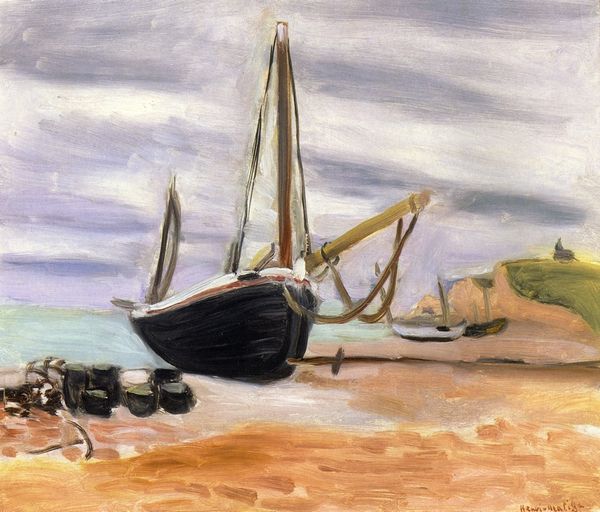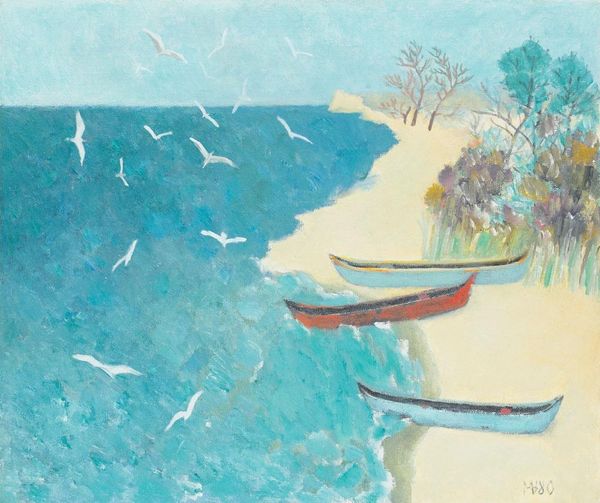
painting, oil-paint
#
boat
#
painting
#
oil-paint
#
vehicle
#
landscape
#
figuration
#
oil painting
#
realism
Copyright: Viorel Marginean,Fair Use
Curator: Look at "Boats on the Shore," an oil painting crafted in 1982 by Viorel Marginean. What catches your eye immediately? Editor: Hmm, it's very still, almost dreamlike. The palette feels deliberately muted. There's a softness, maybe even a hint of melancholy, hanging over those beached boats. Curator: Precisely. Notice the painting’s engagement with the process of its own making; the visible brushstrokes, the thick layering of oil paint. How does the artist's use of materials inform the overall composition and narrative? Editor: It definitely contributes to the sense of stillness, the impasto almost anchors the boats. You can practically smell the linseed oil. It's like they're waiting, inert. I’m drawn to the humble subject and medium - very much of their time but seemingly out of time simultaneously, you know? Curator: The visible layering of oil speaks to the labor involved in artistic creation itself, subtly calling attention to the work behind image creation and our act of reception. Think of the socio-political climate in Romania at the time. Resources were often limited, artistic expression was controlled and mediated through the demands of communist doctrine. The artist is subverting and making commentary. Editor: True, the constraints might explain why he gravitates toward realism. I like this kind of constrained art; it creates an entire world through limited means and a seemingly bland aesthetic, no showiness or heroic poses, simply stating: the boats are there. In his work there is an echo that resonates into what reality and authenticity are. Curator: I agree, this reflects the constraints and challenges within Romania's socialist system in the 1980s. Marginean might be trying to make some statement about ownership and freedom, but the ambiguity makes the art powerful and relevant. Editor: Absolutely. A quiet statement made with ochre, umber and a little bit of magic! Curator: Indeed, it causes us to reflect on the material reality of the work, on our roles as consumers of the final object, but also what boats meant during communist times to the inhabitants. Editor: Yeah, well, it’s been good to delve into the process and, dare I say, a little bit of soul behind “Boats on the Shore.” Makes you think, doesn't it?
Comments
No comments
Be the first to comment and join the conversation on the ultimate creative platform.



